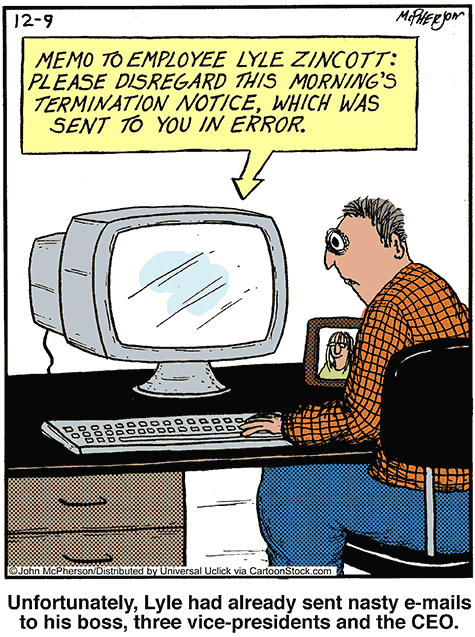How to Assemble Great Virtual Teams for Remote Work
We are living in a digital world, and it’s likely that every manager has thought seriously about hiring remote workers.
Remote work is no longer a thing of the future – it is here, now.

In fact, it’s been around since the dawn of time – how else do you think armies were able to navigate world wars, or multi-national corporations were able to set up remote offices in far-flung locations? Examples of distributed teams are everywhere if you look for them.
After all, even if your team works in the same office, they are basically working “remotely” already – they are just across the room in front of their computers. Since everyone is digitally connected, what’s the difference if we are on a different floor, across town, across the country, or on the other side of the world?
As we have demonstrated before, there are not a lot of down sides to working remotely. Once you embrace a few basic principles of managing employees virtually, you’ll be on your way to building a highly competent team of remote-working professionals.
Related: How to Make the Case to Your Boss to Work Remotely
Why Hire Remote Workers?
There are more reasons for hiring a remote team than we can cover in this article, yet here are a few that we value:
- The pool of qualified workers increases.
- Commuting takes time, costs money, and is stressful.
- Employees have the choice to work where and how they are most productive.
- Hiring remote workers is usually more cost effective for businesses (less office space).
- Technology makes it easier than ever to achieve.
Overcoming Common Fears
Many business owners object to hiring remote workers because they haven’t experienced the upside. With a few procedural changes and a little practice, most objections can be overcome. Let’s address a few of them:
Fear #1: I can’t see if people are working
This is a big one, and you should be concerned about it. Many remote workers and managers will tell you, however, that if an employee wants to goof off, they will – even if they are sitting next to you in an office.
To quote the book Remote: Office Not Required, “…at J.C. Penny’s headquarters, 4,800 workers spend 30 percent of the company’s Internet bandwidth watching YouTube videos. So, coming into the office just means people have to put on pants. There’s no guarantee of productivity.”
Instead of constantly scrutinizing what your employees are working on, set clear expectations. This will enable your employees to understand their obligations and empower them to meet your deadlines.
If your employees deliver quality work and meet your deadlines, does it matter if they did the work in the middle of the night from their grandmother’s basement during a family reunion weekend?
Fear #2: lack of Responsiveness
If your team’s role is to respond to customers quickly, then hold them accountable for doing so, regardless of their location.
The best way to do this is by leveraging customer service software and reviewing reports of response times weekly with your teams. Make a game of it, and you’ll elevate a mundane daily routine to a friendly competition.
An often overlooked benefit: if you’re used to interrupting your team to get a pulse on how things are coming along, you have likely been impeding their progress and might actually see improved results when they are left to focus on the task at hand.
Fear #3: Higher Security Risks
There’s little difference between office security and personnel security. Mandate that your team use frequently updated and secure passwords, encrypted data on their devices, signed and encrypted email (SSL/TLS), and remote or wireless network access through VPNS (Virtual Private Network tunnels).
If this sounds like a headache or a great deal of extra effort, it’s easier than it sounds and you should already be using these protocols.
There are of course infinite ways to make remote systems and company data more secure, but if you take the small steps outlined above, you’ll be well ahead of the rest of the world in securing your intellectual property.
Fear #4: Loss of Culture
Culture is intangible, therefore difficult to define – yet it remains one of the most steadfast indicators of company success. Your first step is to define it in sounds
For example, do you “ship early and often” or take the time to make sure every single component of your product is perfect before you release it?
How do your team members interact with one another – do you enjoy a good joke and some laughs or advocate a more serious approach? Either way, make it known and your employees will follow your lead.
Finding Great Talent
There are plenty of capable people in this world who are ready and willing to do great work – you just have to find them. Now that you’re open to the idea of remote work, your company’s abilities are no longer geographically limited.
Some of the jobs best suited to remote work include:
- Design
- Software development
- Online customer service
- Marketing
- Project management
- Sales
- Accounting
- Copyrighting / Editorial
Where to Look
One way find employees is to use the same sites remote workers use to find jobs.
Some of the best, according to skillcrush.com include:
Skills & Temperament
You will not ascertain from a resume if a candidate is suited for remote work.
When interviewing applicants, look for the following traits: the potential for self-motivation, the ability to focus, and the willingness to learn new things. They must also communicate clearly – and be able to manage distraction well.
On the job skills are great, but even more important are soft skills – like problem solving, empathy, conscientiousness, and emotional intelligence.
Courtesy and respect become more important when workers are remote. Candidates will need to demonstrate an elevated level of awareness of time zones when scheduling and planning. One person’s sleep time could be another’s breakfast and yet another’s happy hour.
The best candidates will already have a long history of work experience – college graduates or those new to the working world may not understand or appreciate business fundamentals, or they may not be mature enough quite yet to handle this type of work.
One way to test a potential candidate is to give them a test project to work on – this way, you can assess a multitude of skills at once: writing, ability to follow direction, speed, and reliability to deliver.
Establishing Working Agreements
Sometimes setting up a working agreement or arrangement like this one can help remote teams, so they can better understand what is expected of them. Once an employee understands expectations and how to meet them, they are often relieved of stress and become more productive.
Letting your teams know the ground rules – such as how you will work together and how you will communicate – can go a long way in gaining both trust and loyalty.
Get to Work
With remote teams, collaboration and a high level of communication rule, so find the best tools you can to facilitate both.
BIG WIN – since you no longer need to focus as much on your team’s work hours, you can now spend time monitoring their accomplishments.
In order to keep everyone accountable, weekly status meetings are essential. At these meetings, you should spend time establishing priorities, tracking progress and assigning tasks – and always document the outcomes for the benefit of the team.
Once everyone is on task and a system is in place, create a virtual water cooler to get to know your team – find out about their families, interests, and hobbies. Building relationships and trust between team members are the keys to your success.
A note about time zones: Make sure that your team members always overlap time zones for at least a few hours each day. If one person works an entire day without anyone else online, their sense of team camaraderie will be non-existent and their morale can decline rapidly.
Related: 6 Ways to Make Sure People Are Listening in Your Virtual Meetings
Take-aways
Keep in mind that taking your teams remote doesn’t have to be done all at once – many companies have an office with a portion of their team off-site.
However, once you have decided to move ahead, you will want to:
- Select the right candidates.
- Change the way you would work in an office.
- Define clear tasks and outcomes.
- Make commitments to your team.
- Communicate consistently.
Remote work can be fun and productive and shouldn’t be feared – many companies have highly effective and successful distributed teams.
Resources:
How to transition a team to remote work: https://scottberkun.com/2013/how-to-transition-to-remote-work/
Telecommuting Is The Future of Work: https://www.forbes.com/sites/meghanbiro/2014/01/12/telecommuting-is-the-future-of-work/
How to run a team of people who never see each other: https://qz.com/230998/how-to-run-a-team-of-people-who-never-see-each-other/
Image credit: Thinkstock.com



